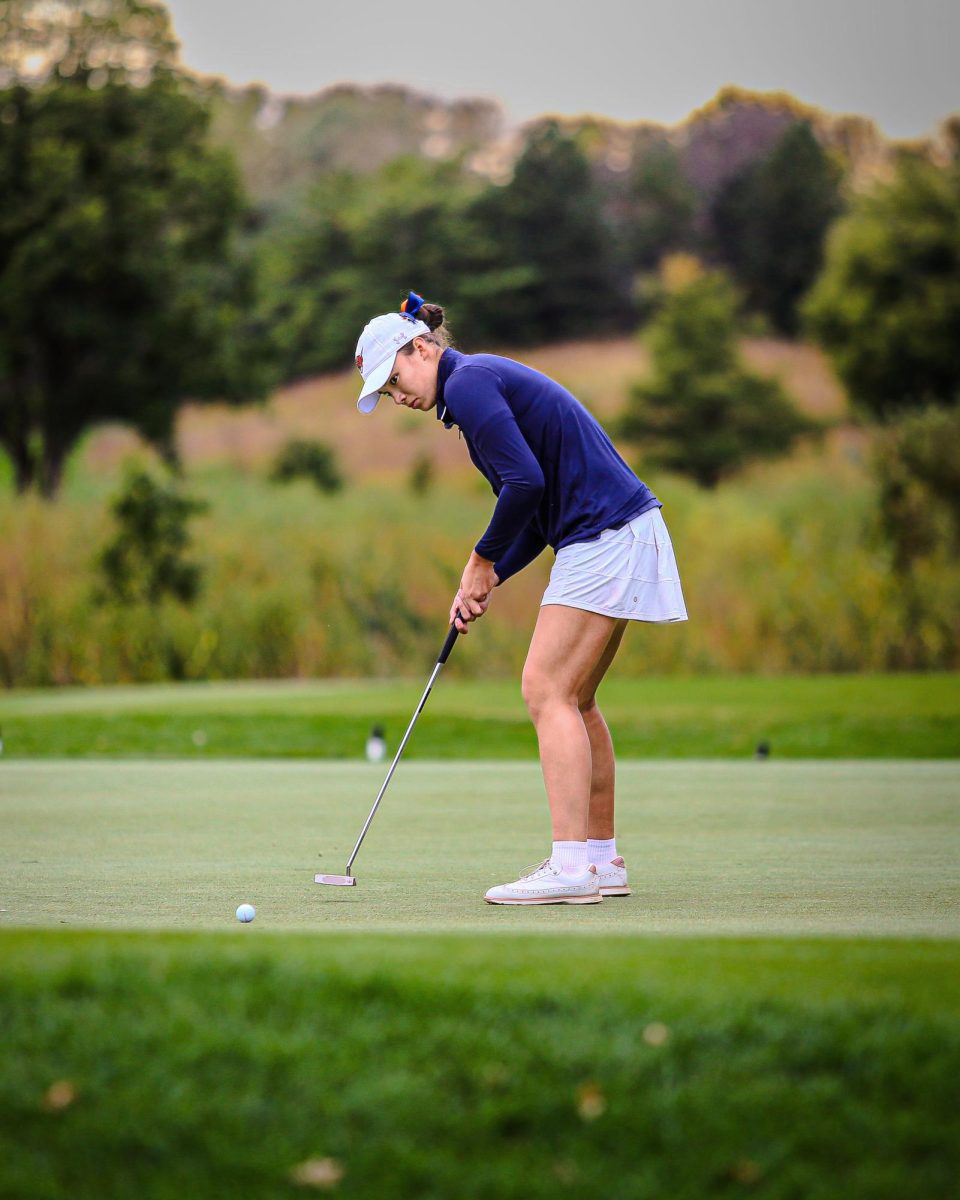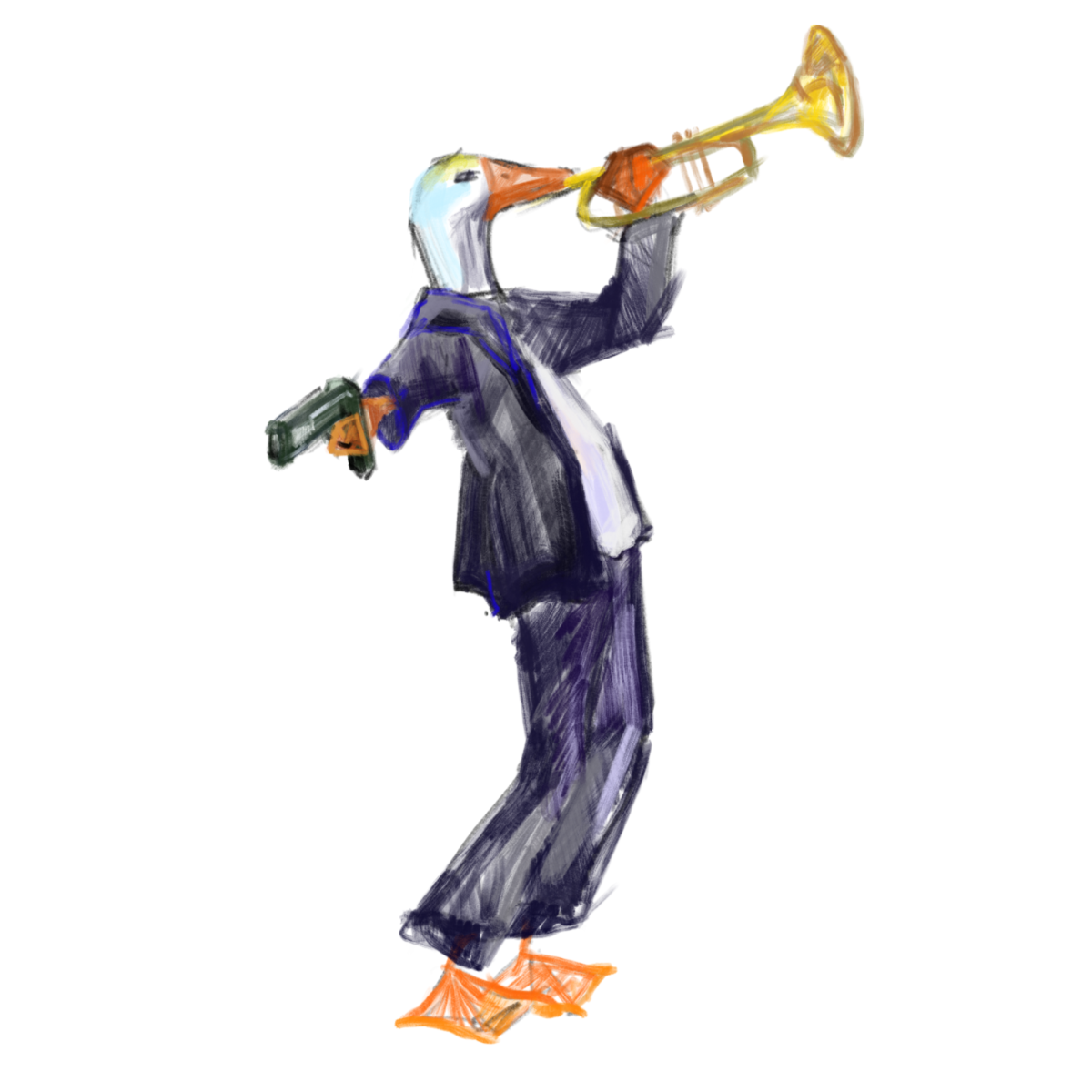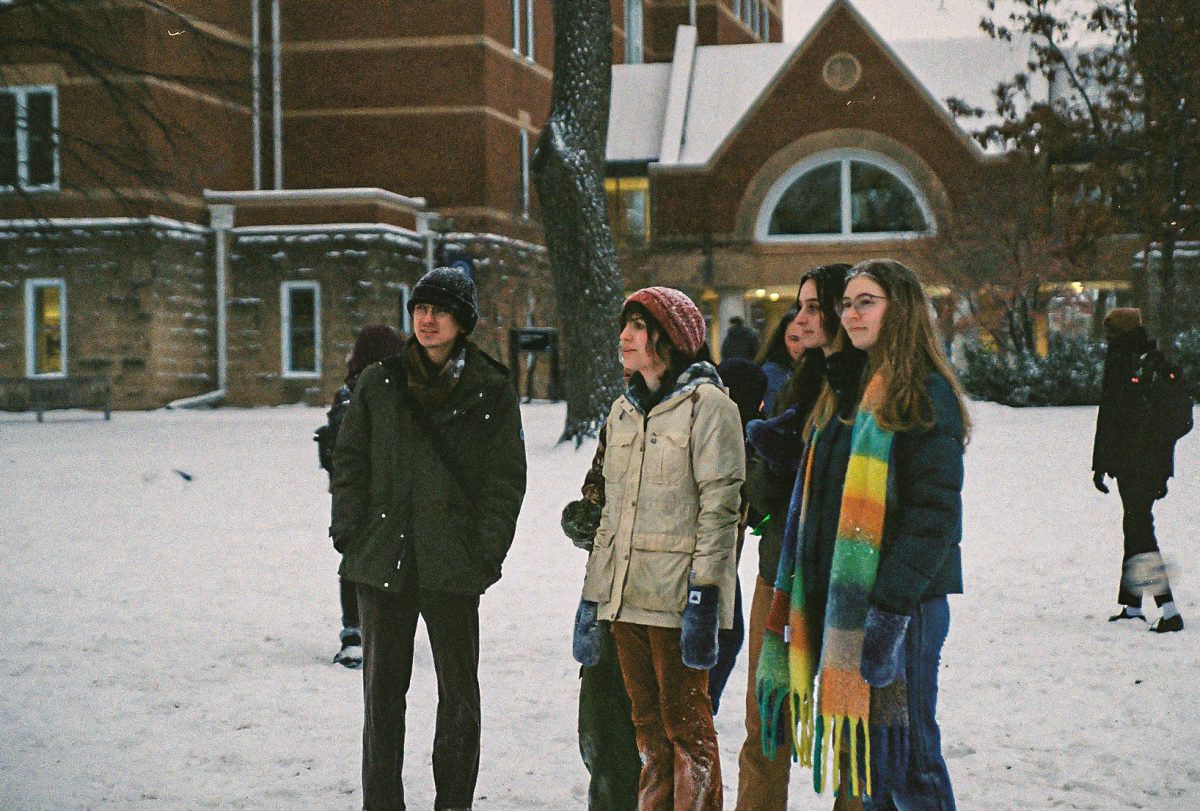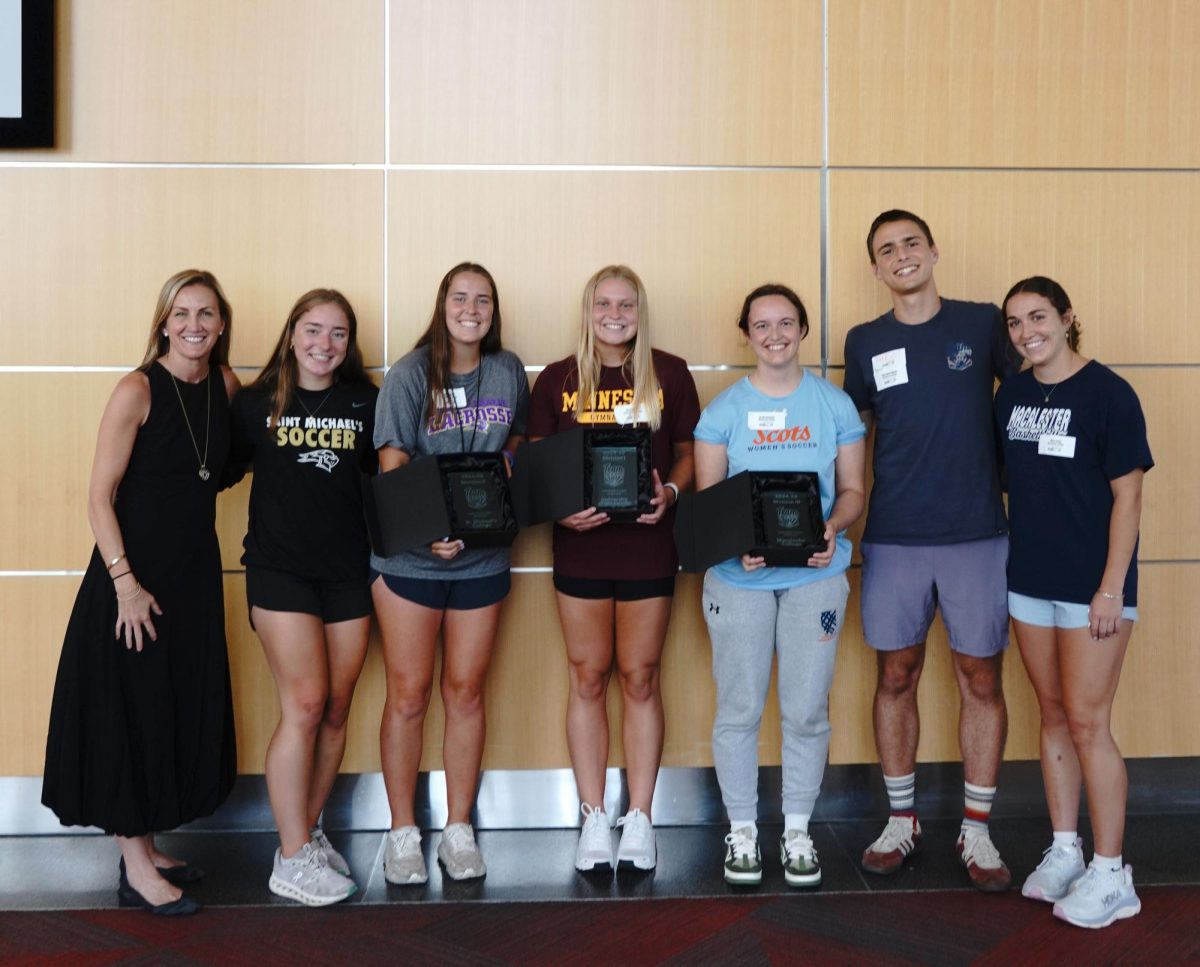
Macalester cheerleading had a sporadic existence before eventually sputtering out. There were golden years of a well-supported, committed squad intermittent with years of absence due to lack of funding, support and interest. The cheerleading faucet, if you will, was turned on and off so many times that it was difficult to ascertain exactly when we had a squad and when we didn’t; I did my best to sift through it all, but I apologize for any slightly inconsistencies. Now, onward (backward?) into the history of pom-poms, flips, human pyramids and plaid skirts!
The precursor to the Macalester cheerleading squad was the “rooting king.” Our first rooting king ascended the illustrious throne of the Scots in 1914. The Sept. 29th 1914 issue of The Mac Weekly issued an advertisement titled “Wanted, a Yell Master.” Student Homer Lindgren ’17, wrote, “[A rooter king] is the thing we must have if Mac is to uphold its reputation in athletics and college spirit.” The rooter king was generally male-identifying, as the title suggests, and led students in “yells” (a.k.a. cheers) during athletic events. The hierarchy of a single leader eventually expanded to rooter squads as mentioned in the Nov. 3rd, 1915 edition of The Mac Weekly: “The Mac rooters organized for the first time into rooting squads led by the Mac band marched down Summit to the cadet field.”
The rooter squads led by the rooter king appear to have morphed into an actual cheerleading ensemble in 1921; at least, that is the first mention of such an organization in the archives. It’s unclear how different the cheerleading squad and the rooter squad were from each other, minus the obvious disparity in nomenclature. Nonetheless, come 1921, Macalester was home to cheerleaders. In the fledgling program, there were often only one or two cheerleaders elected by the student body.
The early years in cheerleading were a far cry from a walk in the park. A blurb in The Mac Weekly on Sept. 29, 1922 reported, “This job is not the easiest one in college, as any victim of the rooting squad can testify. A good cheerleader is a rara avis, and should be carefully nurtured until fully grown.” However, even the presence of a good cheerleader seemingly wasn’t good enough. On Dec. 8, 1932, The Mac Weekly noted, “To produce a [unified Mac Spirit] it was at first thought that more and better cheerleaders would be the magic cure-all. This [was] not entirely successful [as] on all occasions came the feeling that without an enthusiastic student backing even cheerleaders could do little.” Perhaps on account of the lack of student enthusiasm, the program was briefly discontinued.
The cheerleading squad was reinstated at Macalester in 1935 by students Mortimer Dittenhofer ’37, Harriet Pankhurst ’39, and Arthur Crawford ’38. At the time, it was completely commonplace for people of any gender to cheer. In fact, in 1940, the majority of the cheerleaders were male. The gender split gradually began to shift to almost entirely female over the course of the following decade. One of the squad’s most interesting escapades included leading crowds at a campaign rally for Dwight Eisenhower. Eisenhower spoke in Northfield, Minnesota in September 1952. Cheerleaders from Macalester, St. Olaf and Carleton led the over 10,000 audience members in welcoming the presidential candidate.
Cheerleading garb changed numerous times throughout the team’s existence. In 1958, the team received uniforms with a Scottish flair, the brainchild of Mr. and Mrs. Dewitt Wallace. The Mac Weekly reported in the July 11, 1958 edition, “The uniforms are made from the Macalester clan red tartan plaid and are designed by one of the world’s outstanding designers, Main Bocher, who has establishments in both New York City and Paris.”
Despite having a rocky start, the squad became well-liked as they improved and became more established. The 1972-1973 squad was called “the magnificent 7” on account of their enthusiasm and dedication to Macalester teams. According to Ross Huelster ’79 in the Nov. 14, 1975 Mac Weekly edition, “The Mac cheerleaders were so good this year that other MIAC schools ‘borrowed’ a few original Mac cheers and God did they butcher them.”
In 1980, the team had to fold once again, but this time from lack of funds, not enthusiasm. Additionally, that year, Macalester Community Council President Doug Tilton and Paul Berg ran an investigation on the team because they found an ad that encouraged female cheerleaders to cheer for the men’s basketball team, and they were concerned it might be discriminatory, as reported by the Dec. 12, 1980 issue of The Mac Weekly. Instead of uncovering discrimination, they found the customary cheers to be too ‘competitive.’ They offered alternative catchy cheers such as “Stop that game! Don’t compete! It’s no fun to get beat!” and “Don’t keep score! Play for fun! That’s coopera-’sheun!’ Okay, just one more: “We got pride! Yessirreee! Our pride’s in our faculty!”
A year later in 1981, five women resurrected the squad once again. However, the existence of cheerleading became heated towards the later half of the 20th century. Some students argued that cheerleading made Macalester retreat backwards, while others argued it isn’t anymore backward than any other sport. Somewhere in the ’80s or early ’90s, the team faded out once again only to surface once again in 1998 at yet another attempt at reinvigoration. The new group suggested changes such as making the group coed once again and cheering equally for men’s and women’s sports. Despite such well-meaning renovations, the group sputtered out once again and has not resurfaced since. Although I don’t suggest recycling any of the cheers from 1980, the spirit of cheerleading, in that it increases campus-wide enthusiasm for all sports teams, is certainly something we should hold onto.
by Katrin O’Grady











Neil Cameron • Sep 11, 2019 at 3:05 am
bookmarked!!, I like your site!
Angela Fraser • Sep 9, 2019 at 12:31 pm
I simply needed to thank you so much all over again. I’m not certain the things I would’ve sorted out without the actual tactics provided by you on such area of interest. It had become a real troublesome dilemma for me personally, but finding out this specialised style you treated the issue forced me to leap with gladness. I’m just grateful for this advice and even hope you recognize what a great job you’re doing instructing men and women using your web site. Probably you have never met all of us.